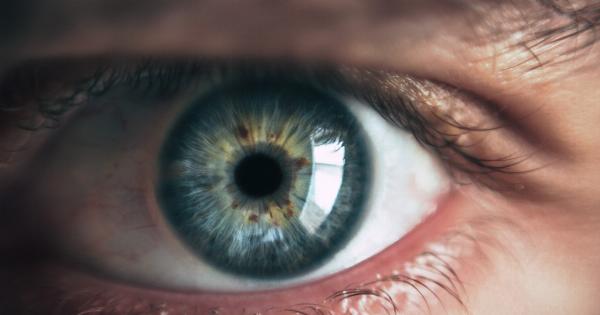Contact lenses are a popular choice for vision correction, providing freedom from glasses for millions of people worldwide.
However, it is crucial to understand the potential risks associated with wearing contact lenses, especially when it comes to bacteria. Bacteria can accumulate on contact lenses and cause various eye infections and complications if proper hygiene practices are not followed.
In this article, we will delve into the essential information you need to know about the bacteria on your contact lenses and how to keep your eyes safe and healthy.
The Importance of Contact Lens Hygiene
Maintaining good contact lens hygiene is paramount for minimizing the risk of bacterial contamination. When contacts are not cleaned or stored properly, bacteria can thrive on their surface, leading to infections such as keratitis.
Keratitis is an inflammation of the cornea that can cause redness, pain, and even vision loss if left untreated.
Types of Bacteria Found on Contact Lenses
A variety of bacteria can find their way onto contact lenses. Some common bacteria types that may be found include:.
1. Staphylococcus aureus: Staphylococcus aureus is a bacterium commonly found on the skin and mucous membranes. When it comes into contact with contact lenses, it can lead to serious infections.
2. Pseudomonas aeruginosa: Pseudomonas aeruginosa is a bacterium that can cause severe eye infections, particularly in individuals who wear extended-wear contact lenses.
3. Streptococcus pneumoniae: Streptococcus pneumoniae is a bacterium known for causing various respiratory tract infections. If it enters the eye, it can lead to eye infections and complications.
How Bacteria Accumulate on Contact Lenses
Bacteria can accumulate on contact lenses through various means:.
1. Improper Hand Hygiene: Touching contact lenses with unwashed hands transfers bacteria onto the lenses.
2. Contact with Contaminated Surfaces: Placing lenses on surfaces that harbor bacteria, like bathroom countertops or towels, can transfer bacteria onto the lenses.
3. Water Contamination: Exposing contacts to water, such as tap water or swimming pool water, increases the risk of bacterial contamination.
Water may contain harmful organisms such as Acanthamoeba, which can lead to severe eye infections.
Preventing Bacterial Contamination
To minimize the risk of bacterial contamination on your contact lenses, follow these important preventive measures:.
1. Wash Hands Thoroughly: Always wash your hands with soap and water and dry them with a lint-free towel before handling your contact lenses.
2. Use Clean Contact Lens Solution: Clean and disinfect your contact lenses using the appropriate contact lens solution recommended by your eye care professional.
3. Replace Contact Lens Case Regularly: Replace your contact lens case regularly to prevent bacterial buildup. It is recommended to replace it every three months.
4. Avoid Water Contact: Do not expose your contact lenses to water, including tap water and recreational water sources like swimming pools or hot tubs.
Symptoms of Bacterial Eye Infections
If you experience any of the following symptoms, it is crucial to seek immediate medical attention as they may indicate a bacterial eye infection:.
1. Redness and Irritation: One of the most common symptoms of a bacterial eye infection is redness and irritation in the affected eye.
2. Increased Sensitivity to Light: Bacterial eye infections can make your eyes more sensitive to light, causing discomfort in bright environments.
3. Excessive Tearing or Discharge: If you notice an abnormal increase in tearing or discharge from your eyes, it could be a sign of a bacterial infection.
4. Blurred Vision: In some cases, bacterial eye infections can cause blurred or hazy vision.
Treatment for Bacterial Eye Infections
Bacterial eye infections require prompt medical treatment. Your eye care professional will prescribe appropriate antibiotics, either in the form of eye drops or oral medication, to eliminate the bacterial infection.
It is essential to strictly adhere to the prescribed treatment regimen to ensure complete recovery.
Contact Lens Wear and Routine Eye Exams
Regular eye exams are crucial for contact lens wearers. During these exams, your eye care professional will evaluate the condition of your eyes and check for any signs of infection or complications.
They will also provide guidance on proper wearing and care for your specific type of contact lenses.
Conclusion
Understanding the risks associated with bacteria on contact lenses is vital for maintaining good eye health while enjoying the benefits of clear vision.
By following proper hygiene practices and seeking immediate medical attention when needed, you can minimize the risk of bacterial infections and ensure the continued well-being of your eyes.




























